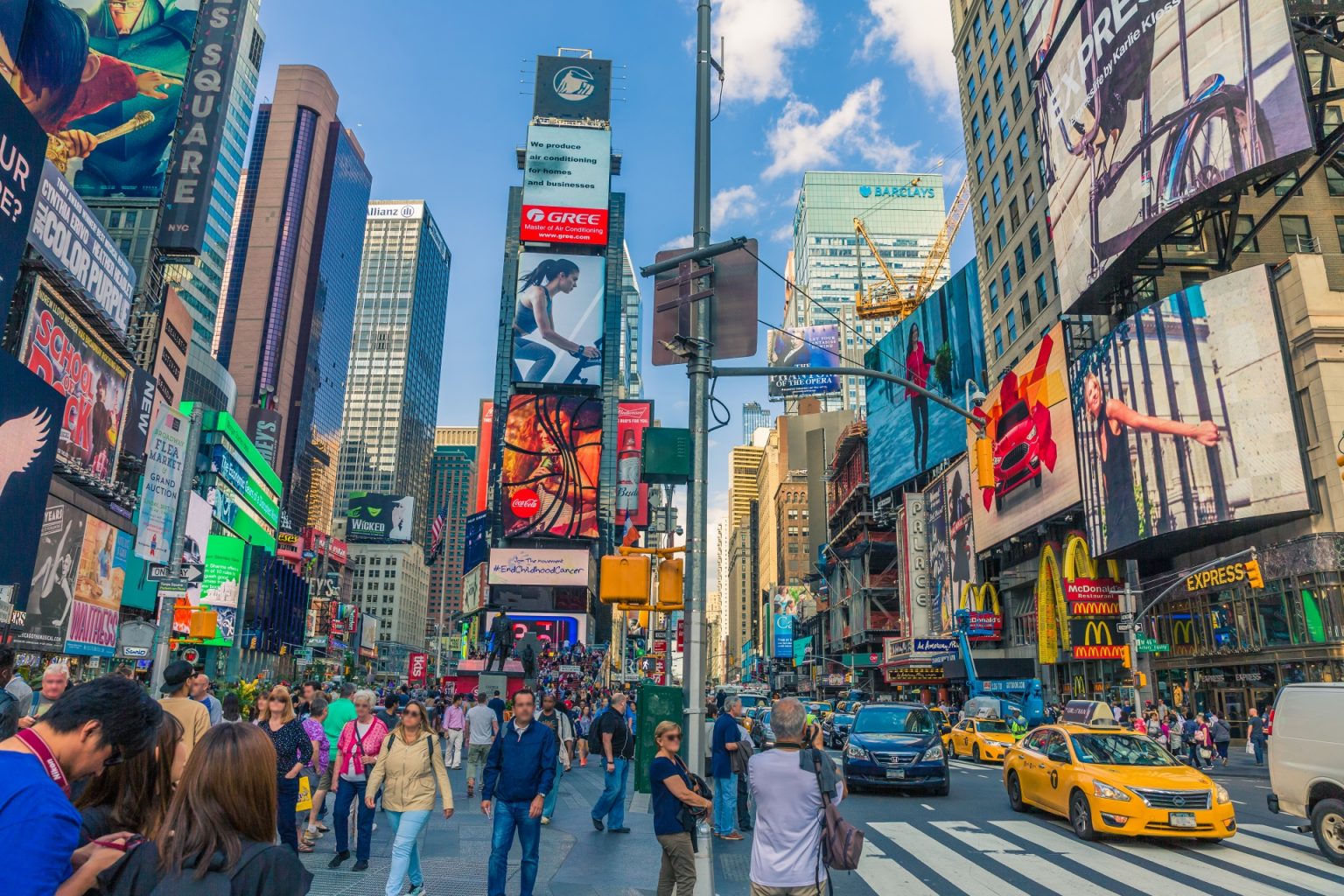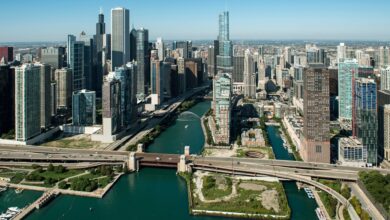NYC Metro Population: Trends, Profiles, and Future Projections

The New York City (NYC) metropolitan area is a vibrant and diverse region, known for its iconic skyline, bustling streets, and rich cultural tapestry. However, behind the glamour lies a complex and ever-evolving population landscape. In this article, we will delve into the demographics, growth patterns, and implications of the NYC Metro Population. We will explore various aspects such as historical trends, current estimates, demographic profiles, geographical distribution, factors influencing growth, comparisons with other metro areas, implications of population growth, and future projections.
Overview of NYC Metro Population
- NYC Metro Area Definition
The NYC metro area, also known as the New York-Newark-Jersey City Metropolitan Statistical Area, encompasses the five boroughs of New York City (Manhattan, Brooklyn, Queens, The Bronx, and Staten Island) along with surrounding counties in New York, New Jersey, and Connecticut. This expansive region serves as a magnet for people seeking better opportunities and a vibrant urban lifestyle.
- Historical Population Growth Trends
Throughout its history, the NYC metro area has experienced significant population growth. From its early days as a bustling port city to the rapid expansion following the arrival of immigrants in the late 19th and early 20th centuries, the region has seen its population soar.
- Current Population Estimates
According to recent estimates, the NYC metro area is home to over 20 million people, making it one of the most populous metropolitan areas in the United States. These estimates take into account both the city’s inhabitants and those residing in the surrounding suburban areas.
Demographic Profile
The demographic profile of the NYC metro area is diverse and constantly evolving. The region boasts a wide range of ages, ethnicities, and income levels. Understanding these demographics is crucial for policymakers and community organisations alike to address the various needs and challenges of the population.
-
Age Distribution
The age distribution of the NYC metro area exhibits a wide range, with a significant portion composed of millennials and Generation Z. However, there is also a growing ageing population, leading to various social and economic implications.
-
Ethnic and Racial Composition
The NYC metro area stands as a melting pot, characterised by its vibrant multiculturalism. It is home to diverse ethnic and racial communities, including African Americans, Hispanic and Latino populations, Asian Americans, and many others. Celebrating this diversity while promoting social integration is a continuous challenge.
-
Household Income Levels
The NYC metro area is known for its economic dynamism, with high-paying jobs, global industries, and financial opportunities. However, there is also a significant wealth disparity, with variations in household income levels across different neighbourhoods and boroughs.
-
Educational Attainment
With renowned universities and educational institutions, the NYC metro area attracts students from around the world. The region boasts a highly educated population, but there are disparities in access to quality education, posing challenges for equal opportunity.
Geographical Distribution
Understanding the geographical distribution of the population is essential for urban planning and resource allocation. The NYC metro area is divided into five boroughs, each with its distinct characteristics. Exploring how populations are distributed across these areas provides insights into social dynamics and resource utilisation.
Borough-wise Population Distribution
By examining the population distribution within each borough, we can uncover unique characteristics and challenges. For instance, Manhattan is densely populated and the commercial heart of the region, while the Bronx faces different socio-economic conditions and urban development needs.
Population Density
One defining feature of the NYC metro area is its high population density. The urban settings and concentrated neighbourhoods contribute to this characteristic. However, the implications of density must be considered in terms of urban planning, infrastructure, and resource management.
Urban vs. Suburban Population
While the NYC metro area is largely associated with the bustling urban centre of Manhattan, there are also significant populations in the suburban areas surrounding the city. Understanding the balance between urban and suburban populations helps identify trends in movement and aspirations.
Factors Influencing Population Growth
Several factors contribute to the population growth in the NYC metro area. Economic opportunities, immigration trends, housing affordability, and transportation infrastructure play crucial roles in shaping the population landscape.
Economic Opportunities: The NYC metro area is an economic powerhouse, providing diverse job opportunities across sectors such as finance, technology, media, and more. These opportunities attract individuals and families, contributing to population growth.
Immigration Trends: Immigration has been a significant driver of growth in the NYC metro area throughout history. It has shaped the region’s cultural fabric and contributed to economic vitality. Understanding immigration trends helps anticipate future population dynamics.
Housing Affordability: As the costs of living in the NYC metro area continue to rise, housing affordability becomes a pressing issue. Balancing the need for accessible housing options while preserving the unique character of neighbourhoods is a challenge policymakers face.
Transportation Infrastructure: A reliable and efficient transportation infrastructure is vital for the functioning of a metropolitan area. The NYC metro area heavily relies on its public transportation system, with millions of people commuting daily. Investing in transportation infrastructure is crucial for accommodating population growth.
Comparison with Other Metro Areas
Benchmarking the population dynamics of the NYC metro area against other metro areas provides valuable insights into regional trends and challenges.
-
Population Rankings Among U.S. Metro Areas
Through population rankings, we can understand the significance of the NYC metro area in a national context. It consistently ranks as one of the most populous areas, providing a foundation for economic and social influence.
-
Population Density Comparisons
Comparisons of population density highlight the unique characteristics of the NYC metro area. It has one of the highest population densities in the United States, fostering a distinctive urban lifestyle.
-
Growth Rate Comparisons
Analysing growth rates helps identify how the NYC metro area fares in comparison to other metro areas. This analysis provides a context for understanding the dynamics of population change.
Implications of Population Growth
Population growth has profound implications for a region, spanning various aspects such as infrastructure, economy, social dynamics, and cultural diversity.
-
Infrastructure Challenges
As the population grows, so does the strain on infrastructure such as transportation, housing, healthcare, and educational facilities. Identifying and addressing infrastructure challenges becomes crucial for sustainable development.
-
Economic Impact
Population growth can boost local economies through increased demand for goods and services. Understanding the economic impact of population growth can guide policy decisions and investments.
-
Social Dynamics and Diversity
With a growing and diverse population, the NYC metro area experiences dynamic social interactions and evolving cultural norms. Promoting social integration and celebrating diversity are important in fostering a sense of community and well-being.
Future Projections
By analysing current trends, we can gather insights into the future of the NYC metro population.
Population Growth Forecasts
Forecasting population growth requires an understanding of various factors such as birth rates, mortality rates, migration patterns, and economic conditions. These projections can inform urban planning and resource allocation.
Factors Affecting Future Trends
Exploring the factors that will shape the future population trends in the NYC metro area allows for proactive planning and policy interventions. Economic trends, immigration policies, and urban development projects can all influence future population dynamics.
Policy Implications
Understanding the implications of population growth and demographic changes helps policymakers devise effective strategies for sustainable development, social integration, and economic prosperity.
Cultural and Social Dynamics
As the population continues to grow and diversify, cultural and social dynamics will evolve. Encouraging inclusivity, fostering dialogue, and promoting community initiatives contribute to social cohesion and well-being.
Cultural Diversity: The NYC metro area thrives on its multiculturalism, with various ethnic enclaves and communities preserving their cultures. Embracing and supporting cultural diversity fosters a sense of belonging and enriches the region’s social fabric.
Social Integration Challenges: Ensuring social integration within diverse communities is an ongoing challenge. Strengthening community organisations, promoting cross-cultural understanding, and fostering inclusive spaces are crucial for social cohesion.
Community Organizations and Initiatives: Numerous community organisations and initiatives have emerged to address the challenges of population growth and diversity in the NYC metro area.
Case Studies and Success Stories
Highlighting successful programs and initiatives that have fostered social integration, community development, and economic empowerment can serve as valuable models for future endeavours.
- Resources and Data
A variety of resources and data sources are available to gain a deeper understanding of the NYC metro population and its dynamics.
- Official Census Data Sources
The U.S. Census Bureau provides reliable data on population trends, demographics, and socio-economic indicators. These official sources provide a comprehensive basis for analysis and research.
- Research Reports and Studies
Research reports and studies conducted by academic institutions, think tanks, and advocacy groups delve into specific aspects of the NYC metro population. They offer valuable insights and recommendations for policymakers and community leaders.
Data Visualization Tools
Data visualisation tools provide engaging ways to understand and explore population trends. Maps, charts, and interactive platforms enhance the accessibility and comprehension of complex data sets.
Conclusion
Exploring the population dynamics of the NYC metro area reveals a rich tapestry of diverse communities, economic opportunities, and social challenges. Understanding historical trends, current profiles, and future projections is crucial for informed decision-making, equitable development, and fostering inclusive communities. By embracing the complexities of population growth, the NYC metro area can continue to thrive as an iconic global destination while ensuring the well-being of its residents.




